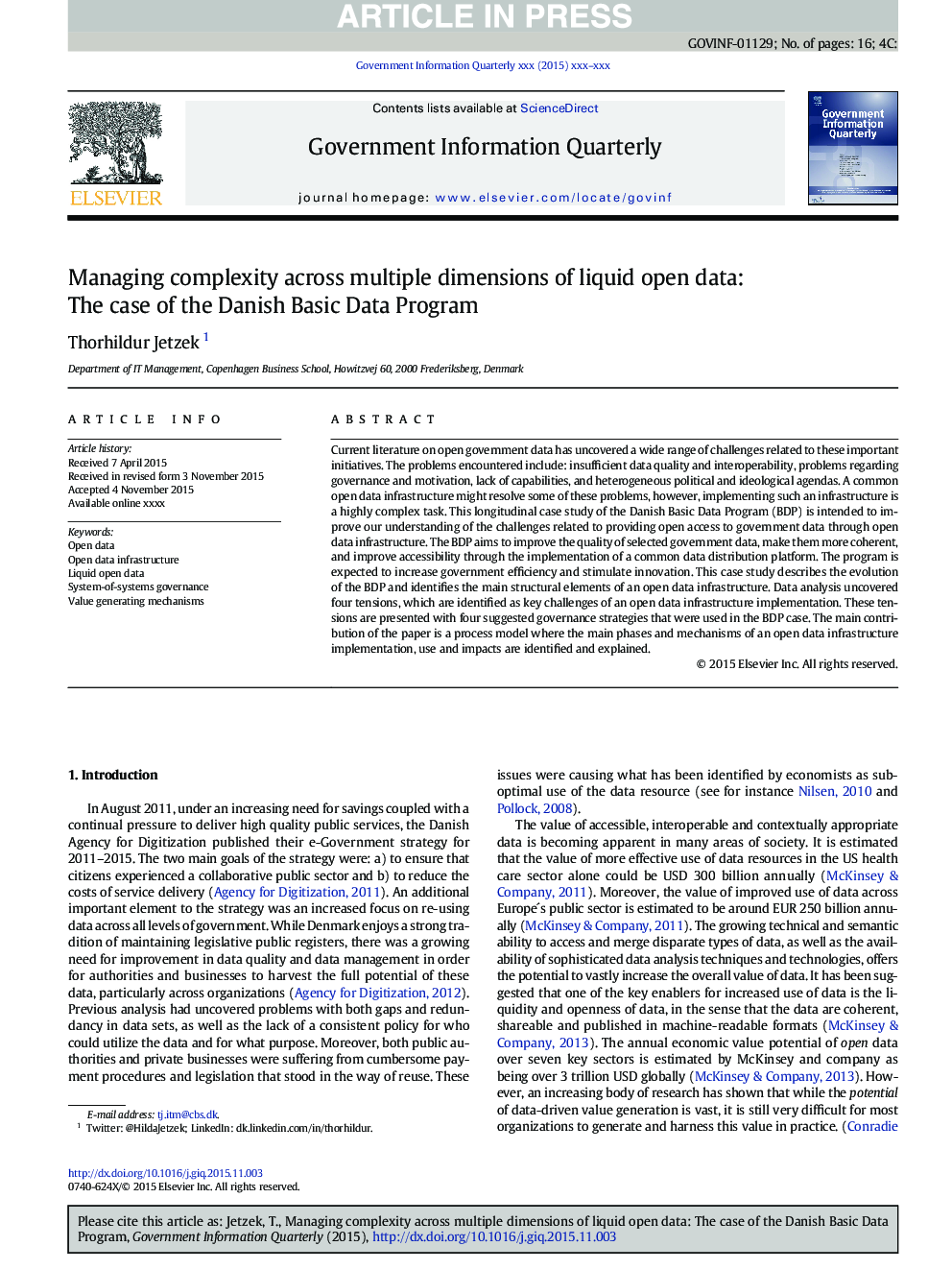| Article ID | Journal | Published Year | Pages | File Type |
|---|---|---|---|---|
| 10495640 | Government Information Quarterly | 2016 | 16 Pages |
Abstract
Current literature on open government data has uncovered a wide range of challenges related to these important initiatives. The problems encountered include: insufficient data quality and interoperability, problems regarding governance and motivation, lack of capabilities, and heterogeneous political and ideological agendas. A common open data infrastructure might resolve some of these problems, however, implementing such an infrastructure is a highly complex task. This longitudinal case study of the Danish Basic Data Program (BDP) is intended to improve our understanding of the challenges related to providing open access to government data through open data infrastructure. The BDP aims to improve the quality of selected government data, make them more coherent, and improve accessibility through the implementation of a common data distribution platform. The program is expected to increase government efficiency and stimulate innovation. This case study describes the evolution of the BDP and identifies the main structural elements of an open data infrastructure. Data analysis uncovered four tensions, which are identified as key challenges of an open data infrastructure implementation. These tensions are presented with four suggested governance strategies that were used in the BDP case. The main contribution of the paper is a process model where the main phases and mechanisms of an open data infrastructure implementation, use and impacts are identified and explained.
Keywords
Related Topics
Social Sciences and Humanities
Business, Management and Accounting
Business, Management and Accounting (General)
Authors
Thorhildur Jetzek,
